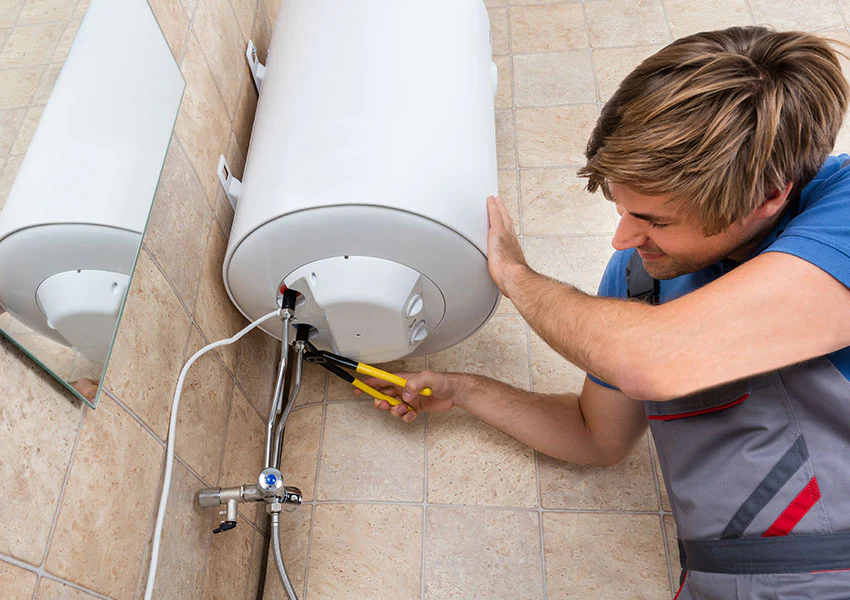We've uncovered this post involving Tips on Maintaining a Water Heater below on the internet and concluded it made good sense to quickly share it with you on this page.

Warm water is essential for day-to-day comfort, whether it's for a refreshing shower or cleaning dishes. To guarantee your warm water system runs effectively and lasts much longer, routine upkeep is crucial. This article supplies practical pointers and understandings on how to maintain your home's warm water system to prevent disruptions and pricey repair work.
Intro
Maintaining your home's warm water system might appear challenging, yet with a few straightforward steps, you can guarantee it runs smoothly for several years ahead. This overview covers every little thing from recognizing your hot water system to do it yourself upkeep tips and understanding when to call in expert aid.
Significance of Preserving Your Warm Water System
Regular maintenance not only prolongs the life-span of your hot water system yet likewise guarantees it runs successfully. Overlooking upkeep can bring about decreased performance, higher energy costs, and even early failing of the system.
Indications Your Warm Water System Needs Maintenance
Understanding when your warm water system needs attention can protect against major problems. Keep an eye out for indications such as irregular water temperature level, odd noises from the heater, or corroded water.
Comprehending Your Warm Water System
Before diving into upkeep tasks, it's valuable to recognize the fundamental parts of your warm water system. Normally, this includes the water heater itself, pipelines, anode poles, and temperature level controls.
Month-to-month Upkeep Tasks
Routine regular monthly checks can assist catch small issues prior to they escalate.
Flushing the Water Heater
Flushing your hot water heater eliminates debris build-up, boosting effectiveness and prolonging its life.
Monitoring and Changing Anode Rods
Anode rods protect against rust inside the container. Inspecting and changing them when worn is critical.
Evaluating and Readjusting Temperature Level Setups
Changing the temperature level setups makes sure optimal efficiency and security.
Do It Yourself Tips for Maintenance
You can do numerous upkeep tasks on your own to maintain your hot water system in top problem.
Looking for Leakages
Consistently examine pipes and links for leakages, as these can lead to water damage and higher costs.
Checking Pressure Relief Valves
Examining the stress safety valve guarantees it operates appropriately and prevents extreme stress buildup.
Shielding Pipes
Insulating hot water pipes minimizes warmth loss and can conserve energy.
When to Call a Specialist
While do it yourself maintenance is advantageous, some concerns need professional knowledge.
Complicated Concerns Calling For Specialist Help
Instances include significant leaks, electrical issues, or if your water heater is continually underperforming.
Regular Expert Upkeep Benefits
Specialist maintenance can consist of comprehensive inspections, tune-ups, and making certain compliance with safety and security standards.
Verdict
Normal upkeep of your home's warm water system is vital for performance, durability, and price financial savings. By complying with these ideas and understanding when to look for professional assistance, you can ensure a reliable supply of hot water without unanticipated disruptions.
How to Maintain an Instant Hot Water Heater
Before tinkering with your hot water heater, make sure that it’s not powered on. You also have to turn off the main circuit breaker and shut off the main gas line to prevent accidents. Also turn off the water valves connected to your unit to prevent water from flowing into and out of the appliance. 2. When you’re done, you have to detach the purge valves’ caps. These look like the letter “T” and are situated on either side of the water valves. Doing so will release any pressure that has accumulated inside the valves while at the same time avoid hot water from shooting out and burning your skin. 3. When the purge valves’ caps are removed, you have to connect your hosing lines to the valves. Your unit should have come with three hoses but if it didn’t, you can purchase these things from any hardware or home repair shops. You can also get them from retail stores that sell water heating systems. Read the user’s manual and follow it to complete this task properly. When the hosing lines are connected, open the purge port’s valves. 4. You should never use harsh chemical cleaners or solutions when cleaning your unit. Make use of white vinegar instead. It should be undiluted and you’ll probably use about 2 gallons. 5. Now flush your water heater. This task should probably take about 40 minutes. We can’t give you specific directions for this because the procedure is carried out depending on the type, model and brand of your heater. With that being said, refer to the user’s manual. 6. When you’re done draining the unit, you have to turn off the purge port valves again. Remove the hosing lines that you earlier installed on each of the water valves. Put the valve caps (purge port) back in their respective places and be very careful so as not to damage the rubber discs that are found inside these caps. 7. Now that everything’s back in place, check your user’s manual again to find out how to reactivate your water heating system. 8. Once it is working, turn one of your hot water faucets on just to let air pass through the heater’s water supply pipes. Leave the tap on until water flows smoothly out of it. https://www.orrplumbing.com/blog/2014/september/how-to-maintain-an-instant-hot-water-heater/

As a keen reader on How to Maintain Your Water Heater & Prolong its Life, I assumed sharing that excerpt was smart. Enjoyed our blog posting? Please share it. Let someone else discover it. I appreciate reading our article about How to Maintain a Hot Water Heater in a Few Simple Steps.
Book A Service Call